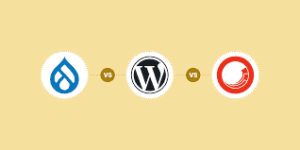Setting up a website to have an online presence has become crucial. You must have a website regardless of whether you are a business or an individual blogger who writes articles to earn money. However, it takes a lot of time and effort, particularly for non-technical people.
The question is how to create and where to host the website as a beginner. In this article, you will learn about cPanel hosting and different types of cPanel web hosting services, leading to the process of creating and managing your website. Let’s dive right in!
Introduction to cPanel Hosting
cPanel is a web-based control panel that helps to create and manage various web hosting services. The cPanel hosting is a Linux-based web hosting, including the installation of a cPanel.
You can also use the graphical user interface of cPanel to fully control various elements of your web hosting. Remember, you can use cPanel for different types of hosting, which includes shared hosting, business hosting, web hosting, dedicated hosting, and WordPress hosting.
Now, how will you know which hosting type is best for you? For that, you need to understand your website’s needs, leading to exploring various hosting providers.
Understand Your Website’s Needs
Before getting into the process of purchasing a host and creating your website, you must know the requirements of your website. You should think of the various things, including the following:
- What is the purpose and expected load time of your website?
- How much web traffic do you expect?
- What features and design do you want to have on your website?
- Note down the storage, bandwidth, and scalability requirements.
- Who will be your target audience? And many more questions based on your domain.
Understand Hosting Provider
After listing your website’s needs, look at the features and limitations provided by various hosting providers. To choose the right hosting provider, consider different factors, including the type of hosting, range of features, pricing, and customer support.
Source: Image by Bethany Drouin from Pixabay
alt = “Demystifying cPanel Hosting_A Comprehensive Guide for Tech Enthusiasts – cpanel hosting providers”
Dig into the types of web hosting and locate the one that suits your website’s requirements. Do not forget to check the key factors of your desired hosting type, such as disk space, bandwidth, speed, security, scalability, and number of websites you can host on that plan.
Process to Create a Website
Once you choose the hosting provider and hosting type, it is time to create a website using the following steps.
Step 1: Register a Domain
The domain name is a URL that people will type on search engines to land on your website. Therefore, it is essential to register a domain that is easy to remember and reflects your business, services, or purpose. You can register your domain on the selected hosting provider.
Step 2: Setup Your cPanel Hosting Account
Sign up for a hosting account by navigating to the hosting provider’s website that you finalized before. Fill out the required information, such as name, payment information, email address, etc. Once you are done, you will get the login credentials to get into your hosting account.
Step 3: Create or Upload Your Website
Once you get into your hosting account, start building your dream website and upload it to your hosting server. Do not worry if you are a newbie, install a content management system tool like WordPress to create your website.
Remember, if you are an absolute beginner and do not know how to code, you should always buy a hosting provider that offers content management systems for website development.
Step 4: Secure Website
After creating and optimizing your website, test all the features, functionalities, links, and overall performance before making it live. You can verify the browser compatibility and responsiveness on multiple devices and check for broken links.
Additionally, test your website’s load time. Make sure it loads within 1 to 2 seconds to satisfy visitors. Implement security measures, such as installing an SSL certificate for data encryption purposes. You can also use security firewalls, plugins, and strong passwords.
Step 5: Make it Live and Manage
Now, it’s time to make your website public to attract audiences. However, you should keep an eye on the website’s performance to manage it efficiently and effectively. Create a backup of your website regularly to protect website data, keep your software up to date, and use analytics tools to monitor the performance of your website.
Conclusion
We concluded that cPanel hosting is essential for creating, managing, and making your website live. However, you need to do thorough research before purchasing a hosting plan. Carefully take essential steps to design, secure, test, and manage your website.





Be First to Comment